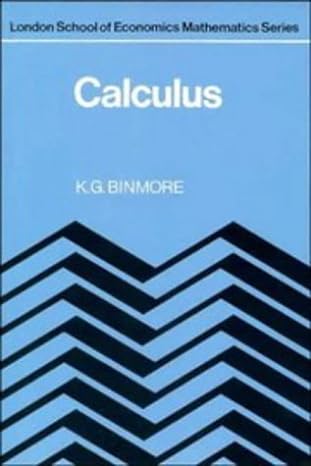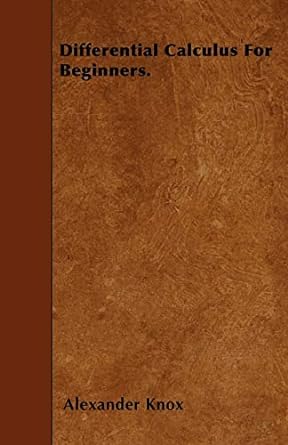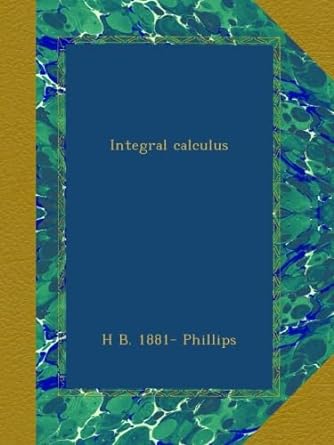Go back


Calculus(1st Edition)
Authors:
K G Binmore

Cover Type:Hardcover
Condition:Used
In Stock
Include with your book
Free shipping: April 16, 2024Popular items with books
Access to 3 Million+ solutions
Free ✝
Ask 10 Questions from expert
200,000+ Expert answers
✝ 7 days-trial
Total Price:
$0
List Price: $12.54
Savings: $12.54(100%)
Book details
ISBN: 0521289521, 978-0521289528
Book publisher: Cambridge University Press
Get your hands on the best-selling book Calculus 1st Edition for free. Feed your curiosity and let your imagination soar with the best stories coming out to you without hefty price tags. Browse SolutionInn to discover a treasure trove of fiction and non-fiction books where every page leads the reader to an undiscovered world. Start your literary adventure right away and also enjoy free shipping of these complimentary books to your door.
Calculus 1st Edition Summary: This book is concerned with the calculus of several variables and provides an introduction to elementary differential and difference equations. The emphasis is on practical problem-solving rather than the proof of formal theorems. Many worked examples are supplied as well as problems for the student to solve, together with their solutions. The techniques are illustrated with applications drawn chiefly from economics, statistics and operational research. Some elementary knowledge of the calculus of one variable is assumed but revision material is supplied throughout the text. A confident approach to problem-solving is not possible without some understanding of the background theory. In this book the theory is presented systematically but informally. Wherever possible, geometric arguments are used and the text is illustrated with numerous diagrams. Particular care has been taken to make the main body of the text suitable for students who are studying independently of a taught course. The book will interest students at universities and other higher education institutions. At the London School of Economics, the course on which this book is based is attended by students reading for a variety of different degrees and with a wide disparity in their previous levels of mathematical training. Some are graduates and some are first-year undergraduates. It is hoped that this book will attract a similar audience: not only of economists, statisticians and other social scientists but also physical scientists, engineers and mathematicians.
Customers also bought these books
Frequently Bought Together
Top Reviews for Books
Naomi wonnen
( 4 )
"Delivery was considerably fast, and the book I received was in a good condition."










